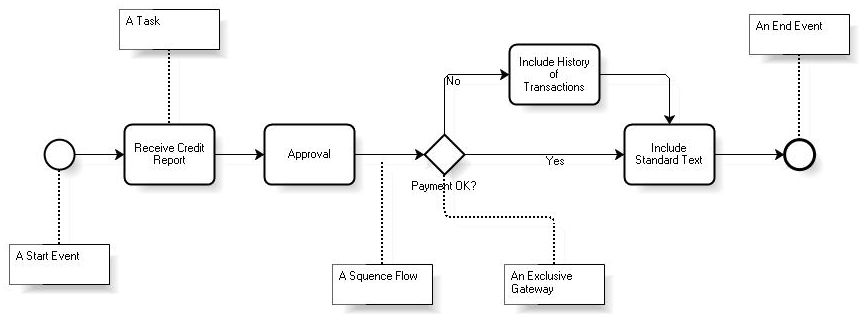Business Process Modeling Notation or BPMN is a graphical notation standard for modeling business processes in a workflow format. BPMN was initially developed by the Business Process Management Initiative (BPMI) and has been maintained by the Object Management Group since the two organizations merged in 2005. The current version of BPMN is 2.0.
The primary goal of BPMN is to provide a standard notation that can be easily read and understood by all business stakeholders. These include the business analysts who define and fine-tune the processes, the technical developers responsible for implementing them, and the business managers who monitor and manage them. In summary, BPMN serves as a common language, bridging the communication gap that frequently occurs between business process design and implementation.

BPMN’s element categories are as follows:
- Activities: they represent the work performed within a business process. They can be atomic (tasks) or compound (sub-processes).
- Events: they occur while a process is running. Processes can catch or trigger events; for example, a process can be modeled to start when a certain condition is met or when a timer notifies that a certain period of time has elapsed.
- Gateways: they enable forking or merging a process flow.
- Swimlanes: they divide a diagram into Pools (process containers) and Lanes (a division of a pool into roles).
In general, these categories are made up of different elements. A process flow is represented with flow paths (solid line connector); in addition, the exchange of messages can also be specified (dashed line connector).
The following sections will examine the various categories of elements available. For each category, their corresponding elements will be examined and classified into core and advanced elements.
References:
- "BPMN: Modeling and Reference Guide" by Stephen A. White and Derek Miers
- Wikipedia.org
Go to the main article - Go to the next section